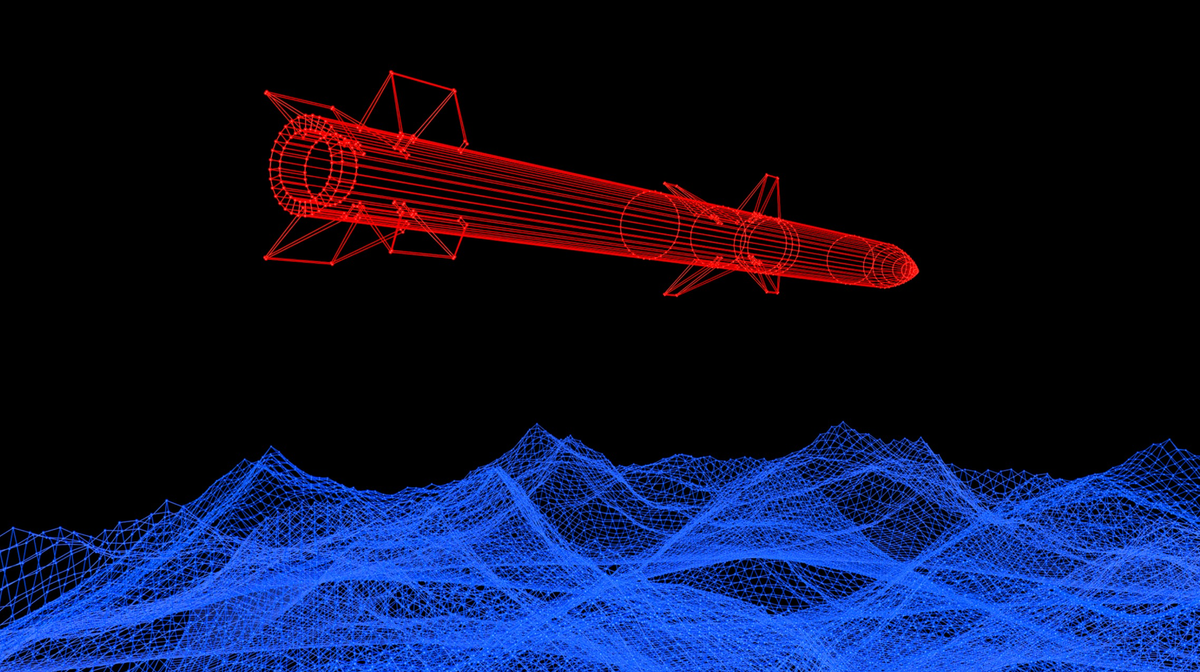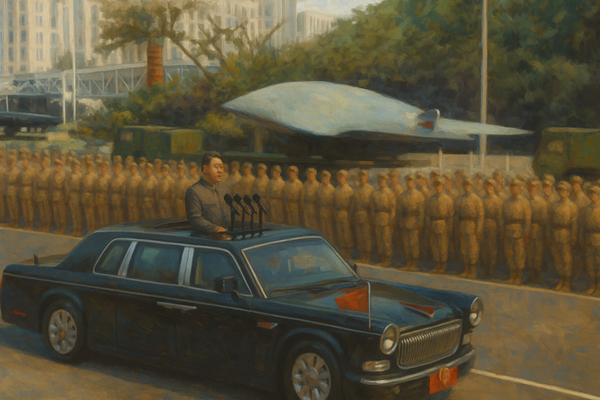🇰🇵 North Korea's Nuclear Strategy

North Korea’s nuclear strategy has developed over the last 50 years under the guiding principles of regime survival, deterrence against external threats, and diplomatic leverage. While Pyongyang originally embarked on nuclear development with Soviet assistance for energy research, it gradually shifted its program toward militarization, culminating in multiple nuclear tests and long-range missile advancements. Today, North Korea officially proclaims its nuclear weapons program as a vital deterrent against perceived foreign hostility—especially from the United States—and uses periodic provocations to extract concessions or influence international negotiations.
Overview
North Korea’s nuclear arsenal is primarily portrayed as vital to the Kim Jong Un regime’s survival, serving as a deterrent against perceived external threats—particularly from the United States and regional allies. At the same time, Pyongyang employs a calculated mix of negotiation and provocation, including missile tests and the possibility of further nuclear development, to secure sanctions relief, security guarantees, and economic concessions. Domestically, the government highlights the nuclear program as a triumph of national pride and technological prowess, reinforcing leadership legitimacy and rallying public support.
Deterrence and Regime Security
The primary rationale for North Korea’s nuclear arsenal is to safeguard the regime of Kim Jong Un by deterring foreign military intervention. The leadership portrays nuclear arms as an existential shield against perceived threats, particularly from the U.S. and its regional allies. Source: UN Security Council Resolutions on DPRK
Diplomatic Leverage and Negotiation Tactics
Pyongyang frequently alternates between dialogue and provocation—such as conducting missile tests or threatening further nuclear development—to strengthen its bargaining position for sanctions relief, security guarantees, and economic aid. Source: International Crisis Group – North Korea
Ideological and Domestic Considerations
Domestically, state media and propaganda emphasize the nuclear program as a symbol of national pride and technological prowess, strengthening the leadership’s legitimacy and rallying public support behind the government’s policy direction. Source: Rodong Sinmun – DPRK State Media
Timeline of Major Developments
2020s
2023 / Continued Missile Launches and Rhetoric
North Korea conducts multiple ballistic missile launches, including potential intercontinental ballistic missile (ICBM) tests, and issues statements warning the United States and its allies against military exercises in the region. International observers note ongoing activity at the Punggye-ri nuclear test site, suggesting possible preparations for another test. Source: BBC News: “North Korea ICBM test: Kim warns US and South Korea over drills” (18 February 2023)
2022 / Escalation of Missile Testing
Pyongyang ramps up missile test activities, breaking previous records for annual launches. U.S. and South Korean officials express concern over indications that the regime is advancing both its conventional and nuclear capabilities. Source: UN Panel of Experts Report on DPRK (2022)
2010s
2019 / Breakdown of Hanoi Summit
Talks between Kim Jong Un and U.S. President Donald Trump collapse in Hanoi without a deal, as disagreements over sanctions relief and the scope of North Korea’s denuclearization persist. Subsequent months see Pyongyang testing short-range missiles and cooling diplomacy efforts. Source: BBC News: “Trump-Kim summit: Second day of talks cut short” (28 February 2019)
2018 / Diplomatic Overtures and Singapore Summit
A landmark meeting takes place in Singapore between Kim Jong Un and President Trump, resulting in a vaguely worded commitment to denuclearization of the Korean Peninsula. While tensions ease temporarily, concrete disarmament steps remain elusive. Source: BBC News: “Trump-Kim summit: What did they actually agree?” (12 June 2018)
2017 / Sixth Nuclear Test and Heightened Tensions
North Korea conducts its largest nuclear test to date, claiming to have detonated a hydrogen bomb. Pyongyang also tests multiple ICBMs capable of reaching parts of the United States, prompting the UN Security Council to adopt new sanctions.
Source: BBC News: “North Korea nuclear test: Hydrogen bomb ‘missile-ready’” (3 September 2017)
2016 / Fifth Nuclear Test
North Korea carries out its fifth nuclear test, further demonstrating an accelerating weapons development program despite widespread international condemnation and expanded sanctions. Source: UN Security Council Resolution 2321 (2016)
2012 / Kim Jong Un Takes Power; Satellite Launch
Following the death of Kim Jong Il, Kim Jong Un becomes the country’s leader. North Korea launches what it claims to be a satellite, but international experts view it as a long-range missile test. Source: Reuters: “North Korea launches long-range rocket” (12 December 2012)
2000s
2009 / Second Nuclear Test
Pyongyang conducts its second nuclear test, prompting intensified UN sanctions. Negotiations stall as North Korea withdraws from the Six-Party Talks, demanding recognition as a nuclear-armed state. Source: UN Security Council Resolution 1874 (2009)
2006 / First Nuclear Test
North Korea shocks the international community by conducting its first nuclear weapons test, claiming the test demonstrates its entry into the global nuclear club. Source: UN Press Release: Security Council Condemns DPRK Nuclear Test (S/8853)
2003 / Withdrawal from the NPT
North Korea announces its withdrawal from the Nuclear Non-Proliferation Treaty (NPT), citing U.S. hostility. The crisis sets the stage for the Six-Party Talks involving the U.S., China, Russia, Japan, and South Korea. Source: NTI: DPRK Withdrawal from NPT (2003)
1990s
1994 / Agreed Framework
The United States and North Korea sign the Agreed Framework, wherein Pyongyang commits to freezing its plutonium weapons program in return for two light-water reactors and heavy fuel oil supplies. The agreement eventually collapses in the early 2000s. Source: Arms Control Association: “The U.S.-North Korean Agreed Framework at a Glance”
1993 / First Nuclear Crisis
North Korea threatens to withdraw from the NPT amid IAEA inspections, sparking the first major standoff with the U.S. over potential nuclear weapons development. A last-minute diplomatic engagement defers the crisis temporarily. Source: IAEA: DPRK and Safeguards (Historic Context)
1980s
Late 1980s / Suspicion of Covert Nuclear Work
Western intelligence agencies detect suspicious activities at the Yongbyon Nuclear Scientific Research Center. Concerns grow that Pyongyang is pursuing weapons-grade plutonium production. Source: RAND Corporation: “North Korea’s Nuclear Futures”
1985 / NPT Accession
North Korea joins the Nuclear Non-Proliferation Treaty, formally committing to refrain from nuclear weapons development in exchange for peaceful nuclear cooperation. Source: UN Office for Disarmament Affairs: NPT Status of States Party (1985)
1970s
1979 / Relations with the Soviet Union
The Soviet Union provides limited technical assistance for nuclear research in North Korea. Pyongyang begins to develop basic nuclear infrastructure and scientific expertise at Yongbyon. Source: Wilson Center Digital Archive: North Korea Nuclear History
1974 / Foundations of Yongbyon Reactor
North Korea starts construction of research reactors at Yongbyon, laying the groundwork for what will become the centerpiece of its future nuclear weapons program. Source: Nuclear Threat Initiative: North Korea Yongbyon Complex




